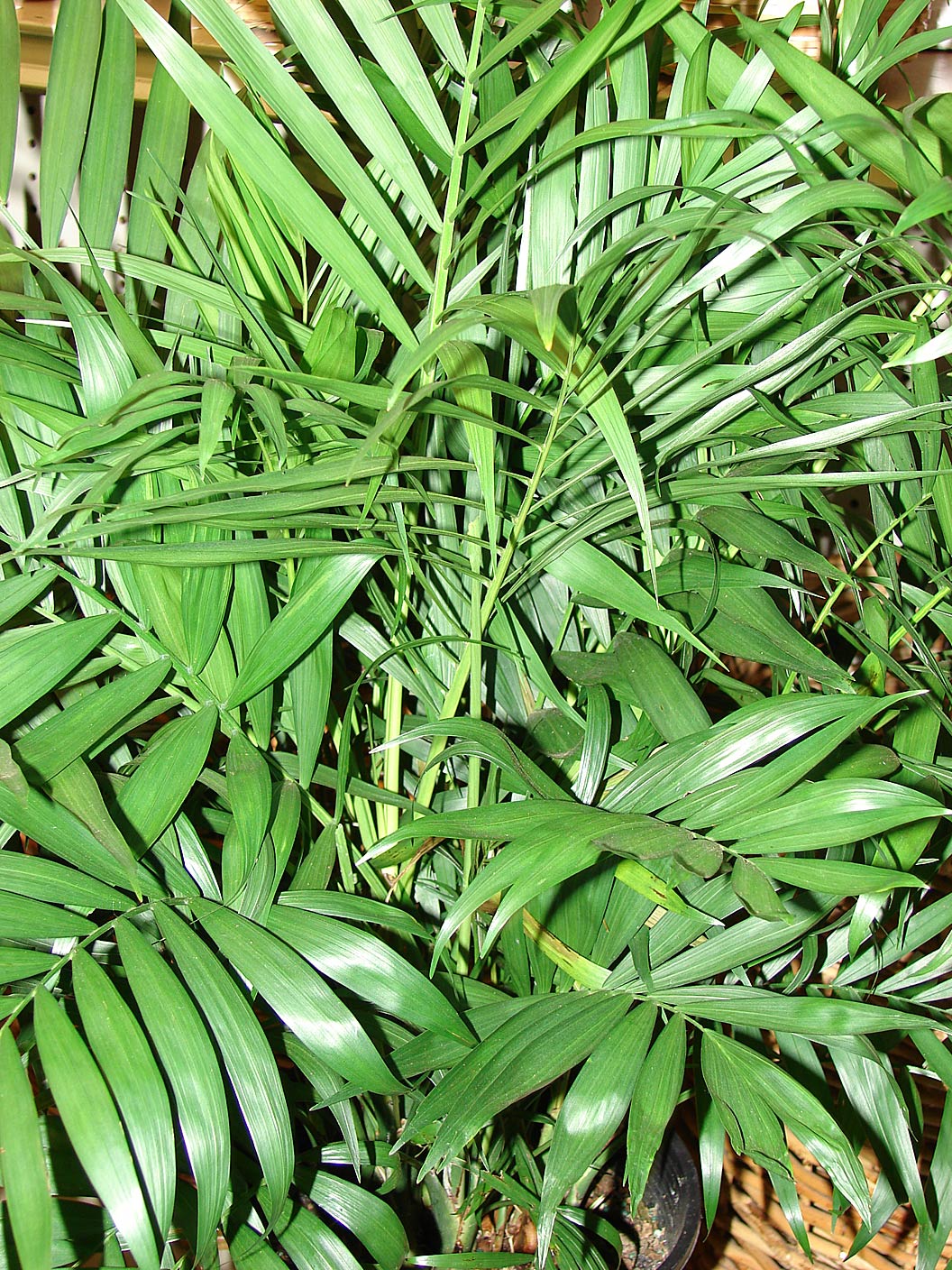Chamaedorea elegans
|
Chamaedorea elegans habit (Starr image 07096-9076). Photograph courtesy of Forest & Kim Starr, starrimages@hear.org |
|
Chamaedorea elegans in container (Starr image 080117-2200). Photograph courtesy of Forest & Kim Starr, starrimages@hear.org |
Common name
parlor palm, good-luck palm
Description
Stems: Solitary, erect (or sometimes leaning) stems, to 2 m tall (occasionally taller), up to 1.5 cm in diameter and ringed with leafleaf:
in palms -- the leaf blade (which is usually divided into leaflets or leaf segments), the petiole (or leaf stalk) and the sheath (which forms the attachment of the leaf to the stem)
scars. Stems of older, decumbent individuals may form adventitious roots. Leaves: Pinnatepinnate:
like a feather; palms with pinnate leaves usually have compound leaflets attached to a rachis, although a pinnate leaf may be entire with pinnate veins (e.g., <em>Chamaedorea metallica</em>)
, reduplicatereduplicate:
Most palm leaflets or leaf segments are obviously folded. If the folds create an upside-down V-shape, with the margins lower than the midrib (so that rain might "run off the roof"), the folding is reduplicate.
, to 1 m long, with linearlinear:
term to describe leaves and leaflets that are narrow with nearly parallel margins; like a line
to lanceolatelanceolate:
term to describe leaves and leaflets that are longer than wide and widest below the mid-point; lance-shaped
leaflets evenly spaced along the rachisrachis:
an extension of the petiole through the blade of a pinnate leaf to which leaflets are attached
and spreading in a single plane. Upper and lower leafleaf:
in palms -- the leaf blade (which is usually divided into leaflets or leaf segments), the petiole (or leaf stalk) and the sheath (which forms the attachment of the leaf to the stem)
surfaces are green, without spines or obvious tomentumtomentum:
a covering of closely matted or fine hairs on plant leaves
; the midrib is prominent and yellowish. Flowers and fruits: Inflorescenceinflorescence:
the reproductive structure of a flowering plant, including palms, consisting of flowers and associated bracts
erect, to 1 m long, green when in flower, turning orange-red in fruit, branched to two orders with up to 35 branches. Yellow male and female flowers are borne on different plants. The spherical fruits (4-7 mm in diameter) are black when ripe.
Diagnostic features
Field: Slender, green stem (sometimes rooting at the nodes) with leaves congested at the stem apex. Erect inflorescenceinflorescence:
the reproductive structure of a flowering plant, including palms, consisting of flowers and associated bracts
branches of female plants orange-red with black fruit.
May be confused with
Other Chamaedorea species, but C. elegans often has adventitious roots at nodes all along the stem.
Distribution
Native to eastern (primarily) Mexico, Guatemala, and Belize in rainforest understory
Additional comments
Often used as a house plant; cultivated outdoors in Florida and Hawaii; sometimes sold as "Neanthe Bella"
Scientific name
Chamaedorea elegans Mart.
Family
Arecaceae/Palmae
Synonyms
Chamaedorea humilis Mart.
Chamaedorea pulchella Linden
Neanthe elegans (Mart.) O.F.Cook
Nunnezharoa elegans Kuntze
Nunnezharria humilis (Mart.) Kuntze Revis.
Nunnezharria pulchella (Linden ex. Helmsl.) Kuntze




